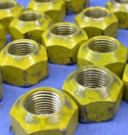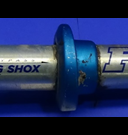Which cleaning technique should I be using to clean my parts?
Before you can select the right parts washer, you’ll need to think about which cleaning technique is right for your parts.
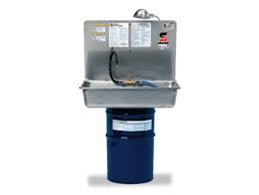
To start you off, here are the most common cleaning techniques and when you should use them.
Let’s begin with the most basic – manual washing.
Manual washing is exactly how it sounds, one step up from basic washing, and involves standing over a part and actually scrubbing it– by hand, with a brush. This technique is ideal for cleaning small parts with light to moderate soils, and even larger parts that require some soaking before washing, but not something that would require over an hour of time each day.
.jpg) Immersion cleaning is a technique that is best used with irregular-shaped products and those that need a good soaking to get the grime off. The process involves the high-velocity flooding of an empty bath that contains the component that needs to be cleaned. Sometimes immersion alone isn’t enough, though, and an extra “boost” is required.
Immersion cleaning is a technique that is best used with irregular-shaped products and those that need a good soaking to get the grime off. The process involves the high-velocity flooding of an empty bath that contains the component that needs to be cleaned. Sometimes immersion alone isn’t enough, though, and an extra “boost” is required.
That boost, referred to as agitation, comes in different varieties, and requires mechanical movement of the part while it’s still soaking. For an even more powerful clean, immersion with agitation and spray under immersion can be used. This process requires adding a spray bar with a circulating pump to the bath. The Spray bar helps to remove soils by adding some extra turbulence to the part as it is submerged in the bath.
Immersion cleaning, along with air-powered agitation is ideal for light to moderate soils. Some examples of parts that are commonly cleaned using immersion cleaning techniques include turbine blades, cylinder heads and pistons and rods.
If you want to kick your cleaning up a notch, you’ll need to head to a more automated style of cleaning. If you’re spending too much time washing, or need your parts to reach a new level of clean, this is the right style for you. Automated methods include high-pressure sprays and ultrasonic cleaning.
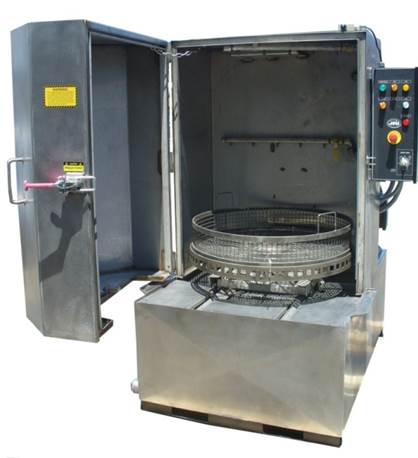 When thinking of high-pressure sprays, try to think of it as one of the most powerful dishwashers you’ll ever use. High-pressure cleaning involves the use of spray in an enclosed cabinet that cleans the external surfaces of the part(s). Most high pressure spray cabinets automate the cleaning process by turning the part on a turntable or a basket to improve the performance, which creates a 360-degree-clean.
When thinking of high-pressure sprays, try to think of it as one of the most powerful dishwashers you’ll ever use. High-pressure cleaning involves the use of spray in an enclosed cabinet that cleans the external surfaces of the part(s). Most high pressure spray cabinets automate the cleaning process by turning the part on a turntable or a basket to improve the performance, which creates a 360-degree-clean.
Ultrasonic cleaning uses cavitation bubbles which are created by high frequency sound waves that penetrate thin layers of metal and spread around the corners of machinery and parts. This method can be used to clean parts that have blind holes and hard to reach cavities that need to be cleaned inside and out. Ultrasonic cleaning is usually not appropriate for thick buildups of contaminants like heavy greases and thick viscous oils.
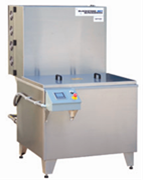 Another form of ultrasonic cleaning is called ultrasonic agitation. This variation involves the use of ultrasonic waves with the agitation added as described above. This helps to flush out debris from internal passages within the part(s) being cleaned, especially when the part has a lot of blind holes and cavities where debris can get caught during the cleaning process. An example of a part that would be ideal for this type of cleaning would be a machined hydraulic valve body or an intake manifold.
Another form of ultrasonic cleaning is called ultrasonic agitation. This variation involves the use of ultrasonic waves with the agitation added as described above. This helps to flush out debris from internal passages within the part(s) being cleaned, especially when the part has a lot of blind holes and cavities where debris can get caught during the cleaning process. An example of a part that would be ideal for this type of cleaning would be a machined hydraulic valve body or an intake manifold.
Choosing the technique or technology for cleaning parts is only one part of the equation. Equally as important is selecting the right type of cleaning solution for the type of part(s) and soil(s) being cleaned as well as for the type of parts washer being used. None of these methods will benefit you much if you don’t select the right cleaning solution. For example, Armakleen’s M-HP-2 is a liquid cleaner/rust inhibitor designed for high-pressure spray applications, while the company’s MPC is a manual parts cleaner that acts as an alternative to mineral spirits and other manual solvent degreasers for use in manual parts washers.
Some other considerations, which will depend on the cleaning style used, include timing, temperature, watt density, and frequency output.
So by determining just three factors: washing equipment, cleaning chemistry, and cleaning technique, you’ll have your valuable parts cleaned to perfection in no time. All while you increase shop productivity, potentially reduce your environmental impact and provide your employees a safer work environment.
- Log in to post comments

